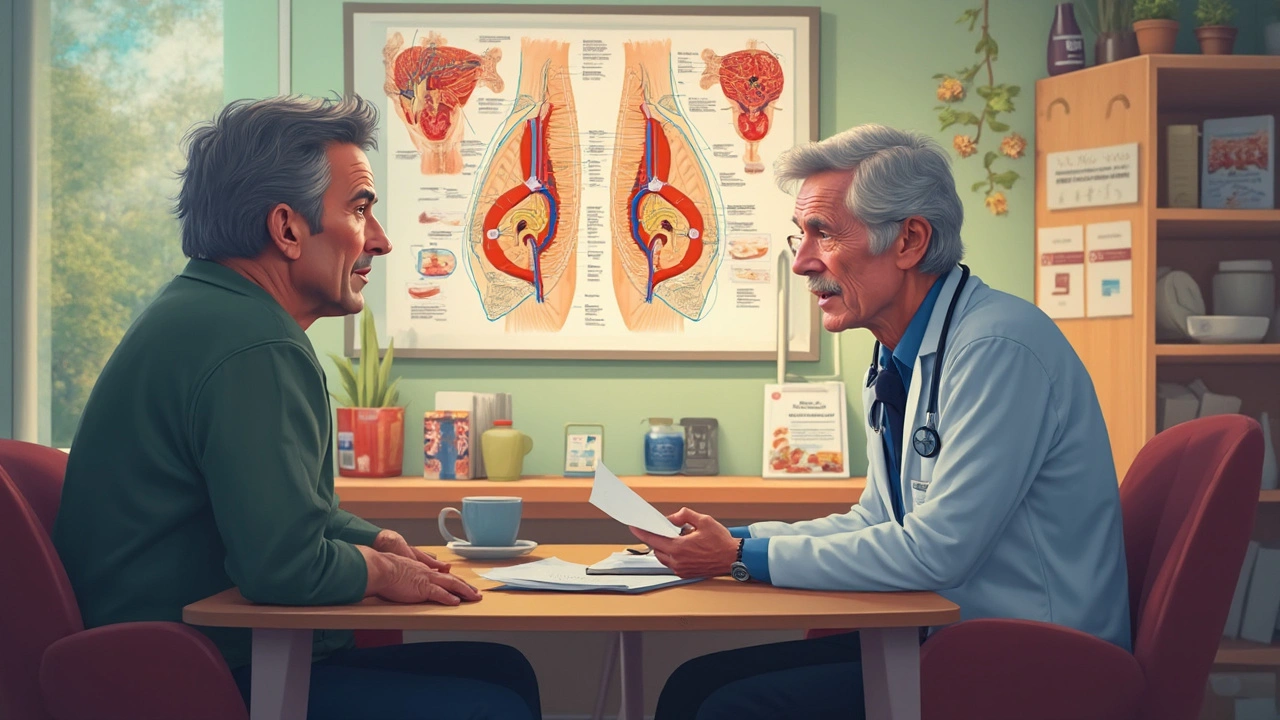Overactive bladder: what it feels like and what to do
Ever been caught by a sudden, urgent need to pee that ruins a meeting or a movie? That’s the core of overactive bladder (OAB). You usually notice frequent trips to the bathroom, waking at night to urinate (nocturia), or a strong urge that can lead to leaking. These symptoms are common and treatable — you don’t have to just put up with them.
Quick tests and how doctors figure it out
Your doctor will start simple: a 3-day bladder diary (you note times, volumes, leaks), a urinalysis to rule out infection, and sometimes a post-void residual check to see how much urine stays in the bladder. If those don’t explain things, urodynamic testing can measure bladder pressure and muscle activity. These tests help separate true OAB (bladder muscle overactivity) from other problems like an infection, stones, or a blocked outlet.
Why does OAB happen? There’s no single cause. The bladder muscle can be overactive on its own, or it can react to irritation from urine infection, caffeine, or constipation. Neurological conditions, some medications, obesity, and pelvic surgery can also play a role. Figuring out the trigger makes treatment more effective.
Simple steps you can try today
Start with practical changes: cut back on caffeine and alcohol, avoid heavy fluids late at night, and spread your fluid intake through the day. Try bladder training — delay urination for small increments (start with 5–10 minutes) to retrain the urge. Keep a bladder diary for a week; it often shows patterns you can fix.
Pelvic floor exercises (Kegels) help many people. To do them, tighten the muscles you’d use to stop urine, hold 5–10 seconds, release, and repeat 10 times, three times daily. If that’s hard, a pelvic floor physiotherapist can teach the right technique and add biofeedback.
When lifestyle steps aren’t enough, medications can help. Antimuscarinics (oxybutynin, tolterodine) reduce urgency but may cause dry mouth, constipation, or memory issues in older adults. Mirabegron (a beta-3 agonist) works differently and usually has fewer dry-mouth effects, though it can raise blood pressure. Talk to your clinician about risks and monitoring.
For persistent, severe OAB, there are procedures: Botox injections into the bladder, sacral neuromodulation (a small implanted stimulator), or rarely, surgery. These are options after trying behavior change and meds.
See a doctor sooner if you have blood in urine, fever, severe pain, sudden incontinence, or suspected neurological problems. If you’re older and on multiple medications, mention cognitive side effects — some common OAB drugs can affect thinking.
Start small: keep a 3-day diary, cut evening caffeine, and try timed voiding. Small, targeted steps often bring fast relief and point the way to the best long-term plan for you.
